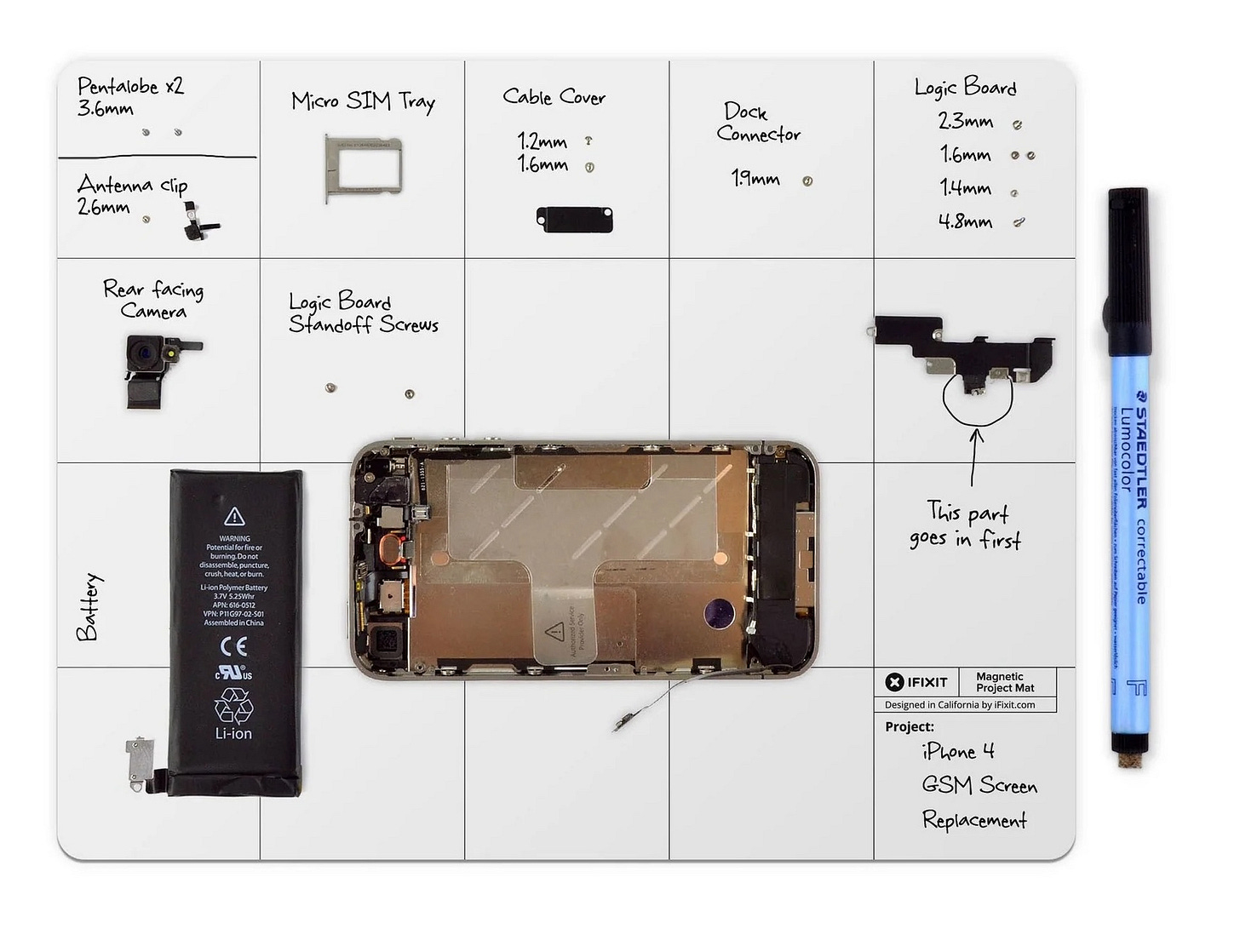Maker’s Muse
Gar's Tips & Tools - Issue # 165
Gareth’s Tips, Tools, and Shop Tales is published by Cool Tools Lab. To receive the newsletter a week early, sign up here.
– Send me a tip or tool recommendation.
–Tell me a shop tale.
–Buy my books (Tips and Tales from the Workshop Vol. 1, Vol. 2).
–Advertise your product, service, newsletter, app, book, tool, or anything you’d like to share with GT&T readers.
Maker’s Muse

Coolest propane tank ever!
How PID Controllers Work
In your travels in the world of electronics, however casual, you have most likely encountered the term “PID controller.” In this Digi-Key video, Shawn offers a crystal clear introduction to what PID (proportional, integral, derivative) is and the science of Control Theory behind it.
In the video, we use an example of a cruise control system in a car. We want to design a mechanism that can maintain a constant speed by controlling the position of the accelerator (gas pedal). PID controllers are a perfect fit for such a system. In fact, most modern cars use PID controllers for cruise control.
A simple, naive approach to designing such a controller is to adjust the process’s input signal based on the set point alone with no feedback. This is known as an “open-loop control system.” This may work in some cases, but most of the time, the output is dependent on other factors (such as road conditions and hill climbs for our cruise control system). As a result, we need to incorporate feedback into our controller.
A “closed-loop control system” measures the actual output of the process and compares it to the set point. The error is the difference between these two values, and it’s used as the input to the controller. The controller looks at that error and makes adjustments as needed to the process’s input.
Scissor Sharpening Basics
Confession time: I absolutely suck at tool maintenance. I avoid it like the plague. Every year, I tell myself that I want to get better, and every year, little changes. At least this year I told myself I would be better about cleaning the gardening/yard tools and have done OK with that. Part of this maintenance aversion means that I never sharpen anything. But, after watching this video, I decided to at least sharpen our scissors collection. In the video, James uses a cheap flat file and a diamond sharpening/whetstone to get the job done. Like James in the video, I have several pairs of lovely vintage scissors that need this kind of TLC. After the scissor sharpening, it should be on to the knives. Our kitchen knives are laughably dull. Do you share a similar aversion to sharpening and other forms of maintenance?
Looking at Hobby Brushes under a Microscope
In this Goobertown Hobbies video, Brent delves into some hobby science with his new digital microscope. Using it, he peers into a bunch of synthetic and natural bristle paint brushes, from the very cheap to the expensive, from the new to the very well used. The results are fascinating. Under the microscope, you can really see why natural bristle brushes are superior to synthetics, how the tension in their fibers helps in keeping the integrated, pointy shape of the brush. One of my favorite parts of the video was seeing his dirty old brushes under the scope before and after a thorough cleaning.
TOYS! Magnetic Project Mat

Via a Cool Tools “Tools of Possibility” newsletter, I was reminded of this wonderfully useful iFixIt magnetic parts mat for assembly/disassembly of electronics. Not only is it magnetized to keep all of your parts in place, it’s also a whiteboard so you can label everything and even take notes. You can also get one for half the price on Amazon.
Revisiting “The Kenny Rogers Rule”
In having done this newsletter for the past 5 years or so, I am frequently asked what are my top-most tips? What are the ones that stick, that “changed my life” (or at least my workflow). I was reminded a few nights ago of one tip that would be at the top of such a list: The Kenny Rogers Rule (as in “You’ve got to know when to hold ’em, Know when to fold ’em, Know when to walk away, Know when to run”). This is a name I came up with years ago for knowing when to take a break from a project that has turned to little but frustration. The other night, I was trying to put together a bed frame that was not cooperating. It was all the things we know all too well about modern flat-pack furniture: warpage, improperly-drilled holes, cheap hardware, confusing instructions. By the time I was down to the last two nuts and bolts, I was struggling, sweating profusely, and rung tight with curses and frustration. I decided to put the tools down and come back tomorrow. In the morning, rested and with a new dedication to getting this damn thing done, it took about ten minutes to finish (with nary a bead of sweat or profane utterance). A perennial lesson from Kenny to us all.
Shop Talk
It’s always interesting to see which posts are going to get the most response. It turns out (OK, no surprise, really) that everyone loves pasta and has something to say about it. I got the biggest response ever to the item I posted in the last issue about cooking spaghetti right in the sauce instead of in water.
Just a few examples:
Steven Roberts: Yes on the pasta in sauce… been doing this for years, both with fresh pasta from my extruder and dried stuff. Originally motivated by being on the sailboat and wanting to minimize fuel, steam generation, and water waste… but I came to like the effect of cooking something in flavor so it’s not just a neutral substrate. Coupled with making pasta that contains herbs, it’s another variable to play with that has a side benefit of resource management… but so much with creamier sauces unless you do the wine part first then add heavy cream near the end. I never turned it into a formula, but when I do that I just make the sauce more watery than usual, then adapt on the fly if I underestimated. (For some things, that differentiation between substrate and sauce has greater expressive value, and the equation is more about fuel and water resources. It’s more of an addition to the toolkit than a standard protocol.)
Daniel Kim: It turns out that you can soak pasta in cold water to make it pliable. This can be stored in a bag in the refrigerator, and then put in to the sauce when you heat it up. (When I’ve tried cooking pasta in sauce, and have leftovers, the pasta gets too soft for me)
Amit Agrawal: Also, this trick thickens the pasta sauce from the starch in the pasta.
George Mokray: I save pasta water for other uses later.
P. Korm: Cooking the pasta in the sauce is a trick that Ralphy shows Jackie Jr. in season 3 of The Sopranos. Though, of course, it’s not tomato sauce, it’s “the gravy’.”
Matt Middleton: If you have a standalone pressure cooker (e.g. Instant Pot), you can do the same thing; you need about 16 oz of sauce, 16 oz of liquid (water, broth, wine, etc.), and 16 oz of pasta. Meatballs are optional, but recommended IMO; if using, add them first. Break long noodles and spread out so they don’t clump too much, then dump sauce and liquid over everything. Set it for high pressure, and cooking time is about half whatever the box says; the linguine I usually use says 9 minutes, so I round down to 4. Quick release the pressure, and if yours has a Keep Warm setting, turn it off. When safe, open and use tongs to stir up the noodles. They might seem a little underdone, but that’ll fix itself up quickly enough. My kiddos prefer the frozen box meatballs, so I use those, but you can class it up with your own fresh ones, saute onions & garlic before adding sauce, or any other technique you like to build up some extra flavor.
And someone even upped the ante by sending this link to frying your spaghetti!






